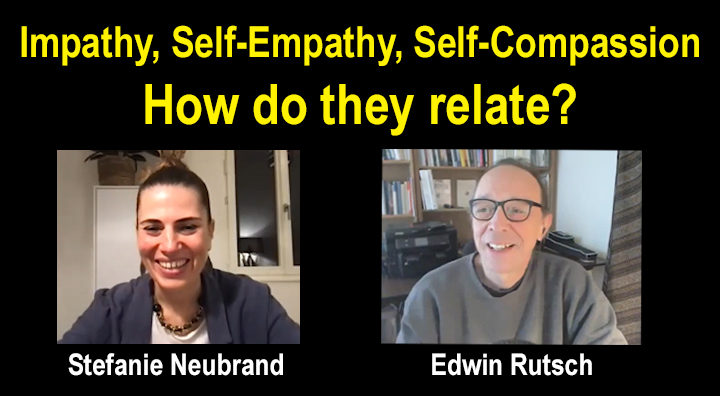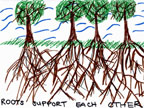|
|
Culture of Empathy
Builder:
Stefanie Neubrand
|
|
|
|
|
|
|
Impathy, Self-Empathy, Self-Compassion
How do they relate?
Stefanie Neubrand |
|
 |
|
Stefanie
Neubrand is a therapist and a researcher. Her PhD Dissertation at the
University of Basel in Switzerland was titled,
The
missing construct: Impathy - Conceptualization, operationalization,
and clinical considerations. She also co-wrote the paper titled, The
missing construct: Impathy.
Impathy is a new psychological construct. In this
interview we review Dr. Neubrand's paper on impathy step by step. The
paper is about Impathy (Introversive Empathy), understood as the ability
to share in and understand one's own feelings, which is considered a
critical psychological construct relevant for the recovery and maintenance
of mental health.
Four interdependent dimensions of Impathy are postulated.
1. Perceiving, i.e. the ability to perceive one's own
bodily and psychological phenomena;
2. Meta-Position, i.e. the ability to adjust the distance from which one
can perceive their own experiences and situation;
3. Accepting Attitude, i.e. the ability to perceive one's experience and
situation with openness, acceptance and without judgment;
4. Understanding, i.e. the ability to understand one's own experience
and the context in which it is embedded.
Impathy may elicit a fifth dimension 5: Impathic
Reaction - From impathy to the impathic responding. |
Interview
Questions
* How did you get interested in Impathy?
* Why do you use the word Impathy, instead of self empathy?
* How do you define Impathy?
* What are Benefits of Impathy
* Existing Research into Empathy for oneself
* Structure and process of Impathy
* What are Blocks to Impathy?
* Similarities with and differences to related construct
* What are ways to promote Impathy
* Future directions
The missing construct: Impathy - Conceptualization,
operationalization, and clinical considerations
by Stefanie Neubrand, 2021
A PhD dissertation that explores self-empathy but calls it impathy.
"Based on this theoretical perspective, 4+1 interdependent dimensions of
impathy are postulated:
-
Internal
Attention, i.e. the ability to perceive one's own bodily and
psychological phenomena.
-
Meta-Position, i.e. the ability to adjust the distance from which one
can perceive their own experiences and situation.
-
Accepting Attitude, i.e. the ability to perceive one-s experience and
situation with openness, acceptance and without judgment.
-
Understanding, i.e. the ability to understand one's own experience and
the context in which it is embedded.
-
+
Impathic Reaction
The
missing construct: Impathy
Stefanie Neubrand, Jens Gaab
This article is about impathy (introversive empathy), understood as the
ability to share in and understand one's own feelings, which is
considered a critical psychological construct relevant for the recovery
and maintenance of mental health. However, while the ability to
empathize with oneself has received considerable attention from the
clinical community, this has not been paralleled by the same scientific
scrutiny, which was subject to the ability to empathize with others.
Impathy has not yet been operationally defined and thus has remained
relatively unexplored, both conceptually and empirically. This work
describes an operational definition of impathy with four dimensions:
Perceiving, Meta-Position, Accepting Attitude, and Understanding. Issues
of differentiation from related constructs are discussed and avenues of
clinical applicability are explored, suggesting that impathy exists as a
distinct human capacity, which can be assessed and which has important
clinical implications. The paper closes with future directions,
including the assessment of impathy and possible research questions. |






